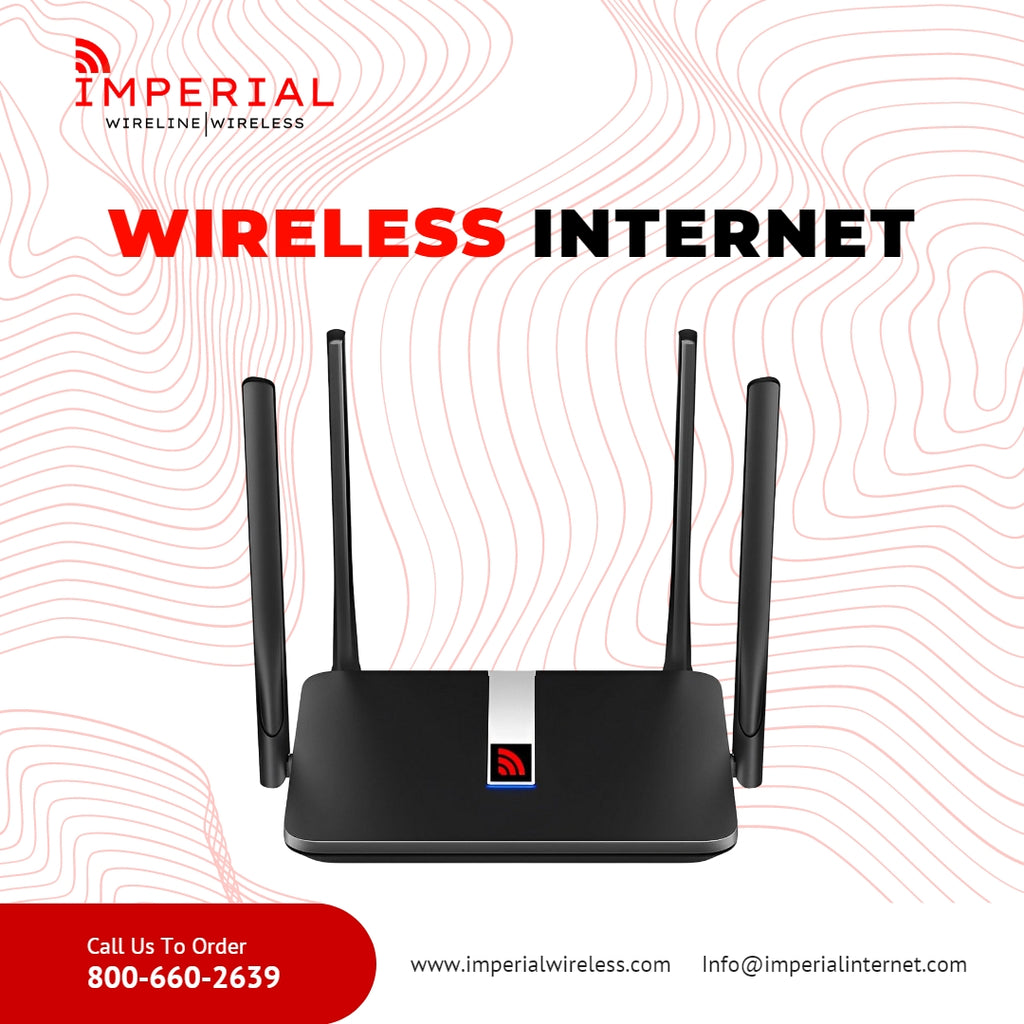What Is The Best Wireless Internet?
Posted by HASSAN JAVAID

As one of the major privately owned service providers in the USA, Imperial Wireless has a distinct position. Imperial Wireless has had constant, organic development since its founding, mostly as a result of its technological innovation and capacity for unwavering client satisfaction. We have developed a variety of connectivity solutions. All the software solutions are a great fit – and hence a natural choice – by actively listening to our customers on immediate response and utilizing their comments and expertise in our research and product development.
Customers of wireless internet service access the web using radio waves. It eliminates copper and telephone line cabling. You may now access the web on any digital device, including computers, smartphones, and tablets, which adds to the convenience. At a specified location, a Service Provider (WISP) uses radio waves or satellite waves to deliver service.
Types of Wire-free Connections
- Satellite
- Fixed Wireless
- Mobile Broadband
- Fiber Optic
- 4G/5G
Satellite
The most popular kind of service that has been accessible throughout the nation for more than a decade is satellite. It sends signals from the service providers to the subscribers' homes using telecommunication satellites. The benefit of the satellite is that it uses basic tools like a tiny dish antenna and satellite modem to provide that larger coverage and operates in all regions.
Fixed Wireless
It provides high-speed connectivity access through radio waves. Sound waves are beamed at your residences. If it lacks cabling like phone lines, DSL, or fiber optic cables, it is the best choice for your area. A high-speed connection is available at a fast-speed internet at up to 30 Mbps rates.
Mobile Broadband
The other type of service that provides consumers with broadband connectivity on their laptops or smartphones is cellular networks. In the past, cellular data services had a low speed and a lot of connection drops. Nowadays, faster connections than those made possible by conventional connections include EVDO, 3G, and LTE.
Fiber-Optic
When it comes to downloading speeds and general performance, fiber is unrivaled. This alternative still requires a wired connection if fiber is available, but you don't need an existing phone or cable line.
In terms of actual performance, fiber doesn't have many drawbacks. Additionally, the cost is comparable to many other plans. The problem is that there are only fiber solutions available in 43% of the country. The availability of fiber is still a matter of waiting for the other fifty-seven percent of the population. It has affordable monthly rates. Further, there is no throttling on the web.
4G
4G LTE should be an option for you if you have mobile coverage inside your home. This is another great low-cost surfing alternative, with monthly costs often ranging from $40 to $60. However, download speeds are nowhere near as fast as 5G or fiber, so it's crucial to examine how you intend to or must use the web.
5G
5G, which is significantly better than 4G and is a superior alternative for most users, is one generation newer than 4G. Only 5G isn't yet generally accessible over much of the nation, unlike fiber.
The fact that 5G speeds should remain consistently high—even during the busiest hours of the day. 5G typically ranges in price from $50 to $70 per month and offers download speeds of up to 200 Mbps. The benefits include High download speeds and low latency, excellent value for high speed, and the latest alternative to 4G LTE.
Networking via a mobile hotspot
A mobile hotspot is a good option to access the web while on the go if you don't want anything to keep you anchored to one place. You'll need a cell phone plan with the ability to access your hotspot connection. This typically costs extra and can quickly consume your data.
Use the hotspot on your phone to connect to the web when you need it for a different device, such as your computer or TV. Even without using your phone, you can access the web through your phone service thanks to specialized mobile hotspot devices. It is widely accessible and does not depend on one location.
Benefits of Wire-free Connectivity
Mobility
One of the most important benefits of choosing a wire-free connection is mobility. A wired connection might restrict your usage in numerous ways because the connections limit your movement. To get some mobility, you must remove the cords and re-plug them in at a different place.
Supports a Variety of Devices
Multiple devices at the same time and access the web. The implication of this is that you can permit each member of your family to join the network using their own device. It works with the majority of digital devices, including computers, tablets, and smartphones, making it particularly helpful in work contexts.
Scalability
Another noteworthy quality of a wire-free connection is scalability. Without the need for additional equipment like cable, it is simple to handle the development of a business with a wire-free connection. Compared to a wired connection, a wire-free network can be expanded more quickly and farther within a home or workplace.
You can increase connectivity throughout your home and have access to the web from anywhere by choosing a wire-free connection. It eliminates the mess created by cables and relies simply on basic tools to establish the connection. So choose a service provider with fast, reliable speed.


